Few things are more frustrating than looking forward to delicious strawberries only to find your plants aren’t flowering. If your plant isn’t flowering, it can’t produce strawberries. Why are your plants not flowering? What can be done to encourage strawberry plants to flower?
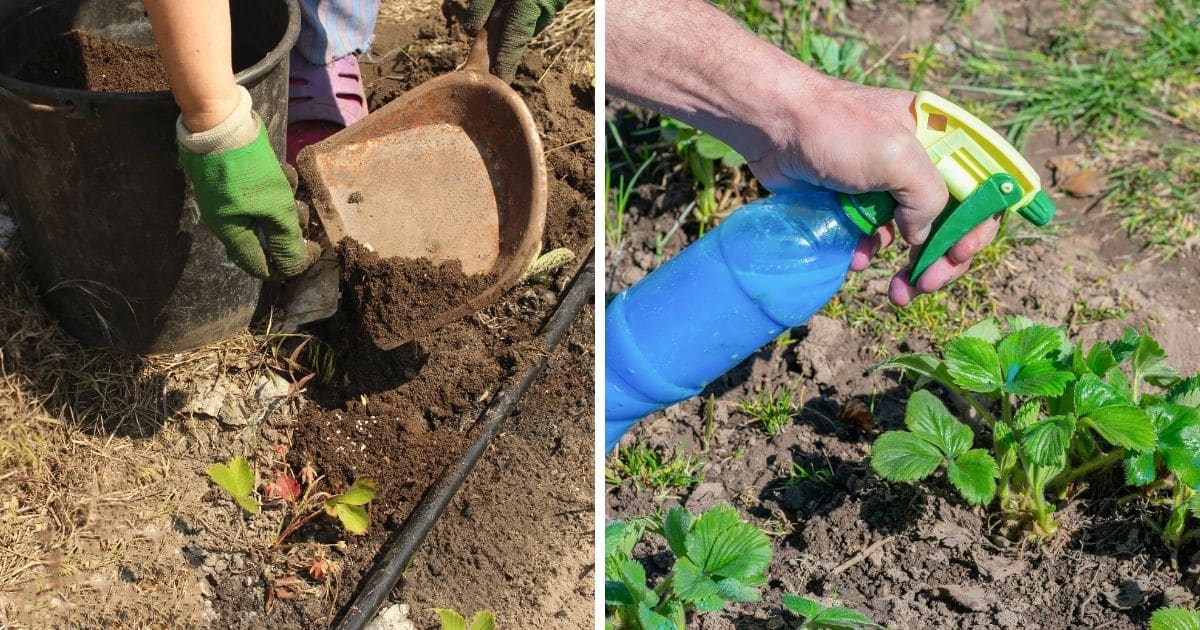
Top Reason
You may not see flowers on your strawberry plants because of imbalanced fertilizing. Either too little or too much fertilizer can be detrimental to strawberry health.
Not enough fertilizer
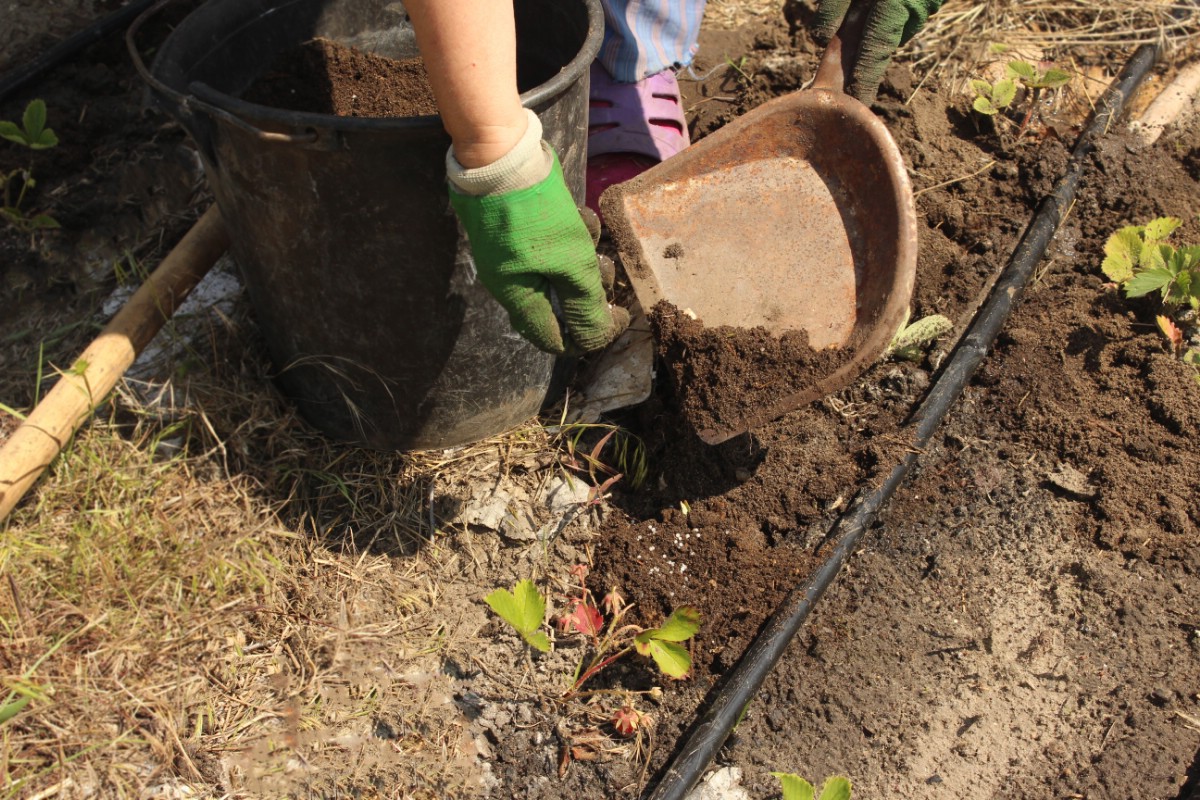
If your plants seem a little skimpy by the time they should be flowering and show no signs of fertilizer burn, they may not be getting enough nutrients from the soil. Apply a balanced quick-release fertilizer to jump-start flower production. In general, you should use a balanced 12-12-12 NPK slow release fertilizer or compost at the beginning of the growing season for optimum strawberry plant health.
If you see lots of healthy leaves but no flowers, your plants probably have enough nitrogen and phosphorus but lack potassium. Potassium aids the movement of water and sugars in plants and is necessary for flower and fruit development.
Try applying a quick-release potassium-rich fertilizer. You can make a gentle, organic, potassium-heavy fertilizer at home by boiling or soaking banana peels in water. Use the banana peel water to water your strawberry plants generously once a week until flowers appear.
Too much fertilizer
Too much fertilizer can burn plants’ leaves and roots and will result in no flowers. Fertilizers are basically salts so too much can drink up all the water in the soil and even in your plants, leaving them dehydrated even though you may water frequently.
You may be able to save over-fertilized plants by overwatering them for a few days to flush out the extra fertilizer. Repotting or transplanting may also help the situation. Both options will further stress your plant but it will almost certainly die without any interference. Wait until the next growing season for flowers to appear if your plants have been overfertilized because they will need time to recover before producing flowers and fruit.
Temperature
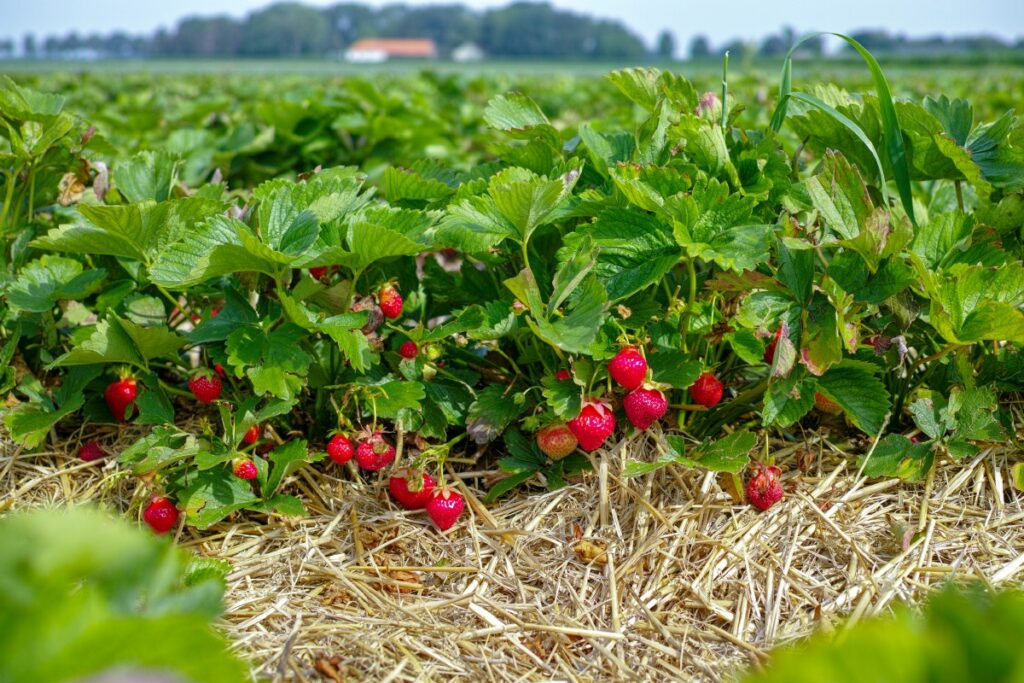
Another reason your plants may not be flowering is that the weather is too hot. Strawberries grow and produce best between 60-80 degrees. If your weather is consistently above 80 degrees, try one of these 8 tips to protect strawberries from extreme heat.
If your weather is below 60 degrees, it may be too cold for your strawberry plants to set flowers. Bring your plants inside, provide a heat source, or wait for the weather to warm up to induce flowering.
Pests
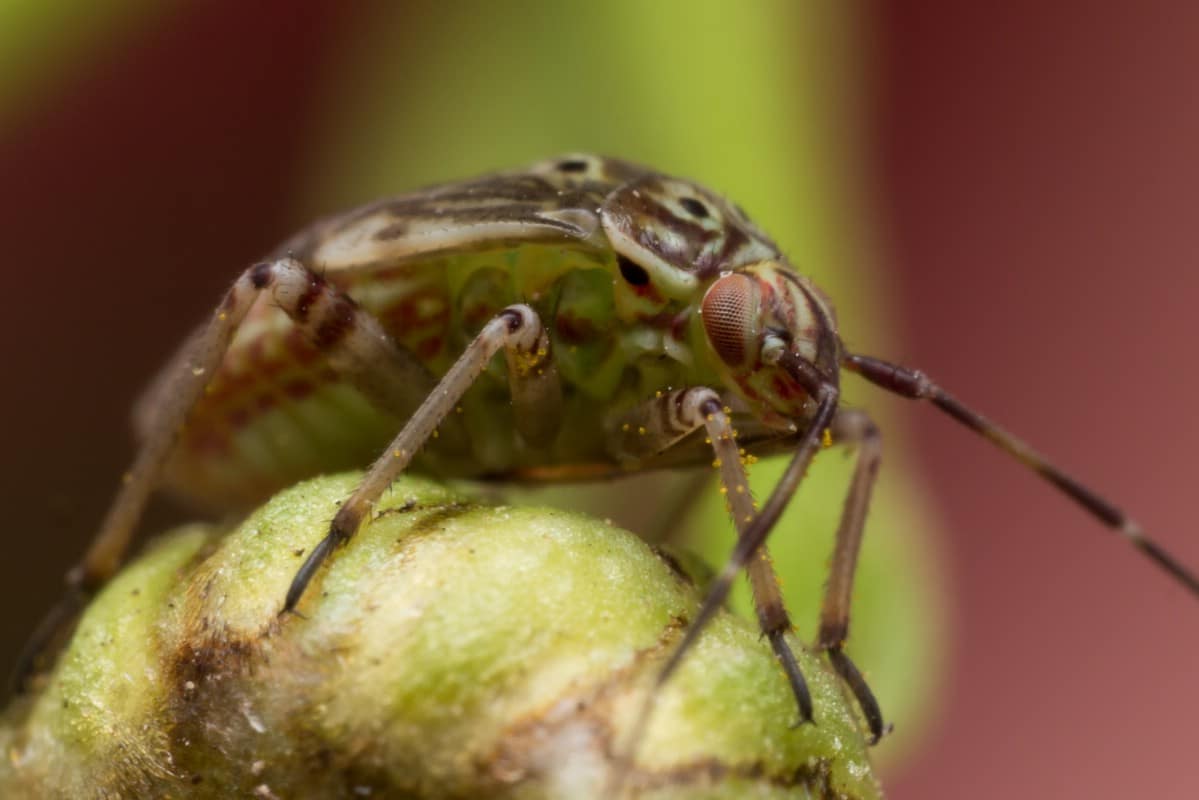
You may not see flowers because pests are eating whatever buds your plant produces. Lygus bugs feed on both buds and strawberries. Also known as tarnished plant bugs, they have green or brown quarter-inch long bodies with yellow markings. You can control them with insecticide or by introducing predators like pirate bugs.
Strawberry bud weevils lay their eggs in new strawberry buds then clip them off so the nymphs can feed on the same bud when they hatch. This tiny weevil is dark brown with 2 black spots. Check your strawberry patch for clipped buds and remove them immediately. Plants may respond by producing more buds, but if the infestation is too large, you won’t find any unclipped flowers.
Control strawberry bud weevils by planting an early-bearing strawberry crop around the perimeter of your patch as a trap crop or by applying insecticides.
Soil
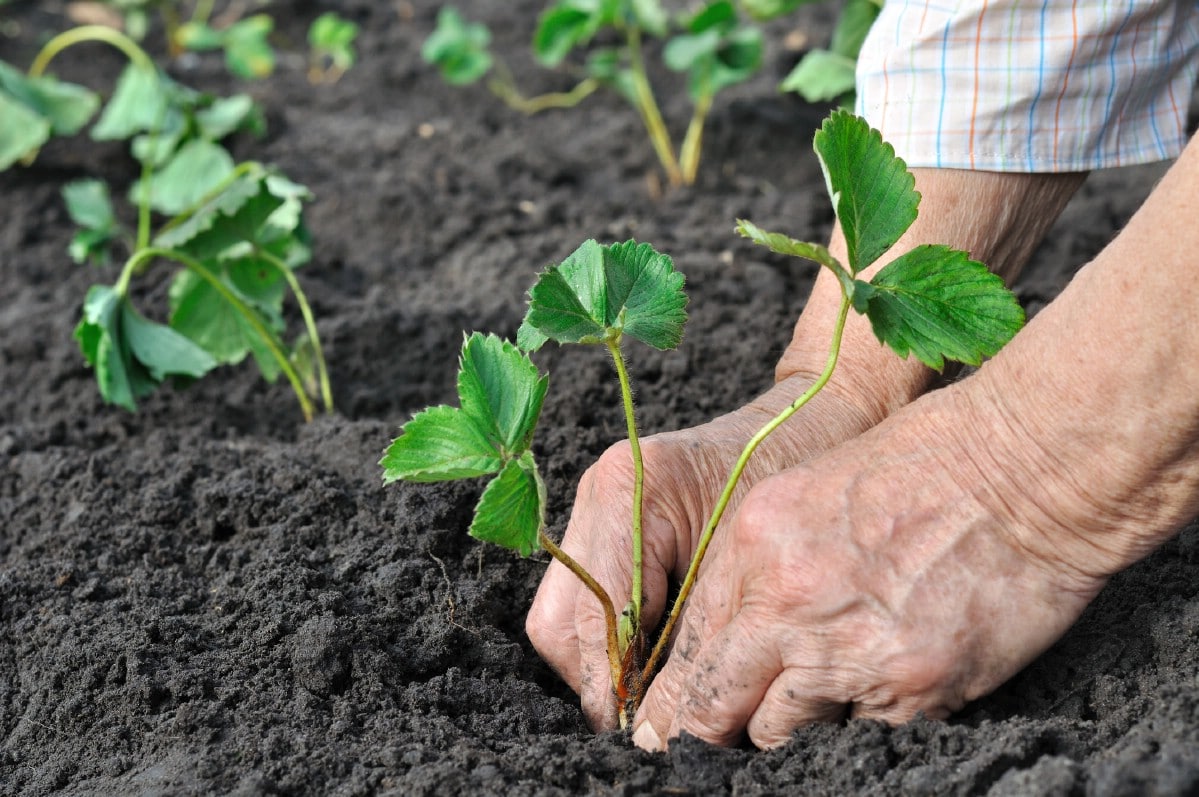
Strawberries require well-drained organic soil with a pH between 5.5-7.0. If your soil retains too much water, mix in some perlite to the potting mix or transplant it to a sandier location. Perform a soil test to learn if your soil is either too alkaline or too acidic.
If the pH is above 7.0 your soil is too alkaline so you need to add an acid. Add sulfur, wood chips, or peat moss to the soil. Make it a habit to add compost once a year to the berry patch to maintain the proper acidity.
If your soil is too acidic, below 5.5 pH, add lime or dolomite to the soil. Increasing calcium content by mixing in wood ash or bone meal is another effective solution. To increase calcium with items from home, crush some eggshells, apply them to the soil surface, and water well.
Diseases
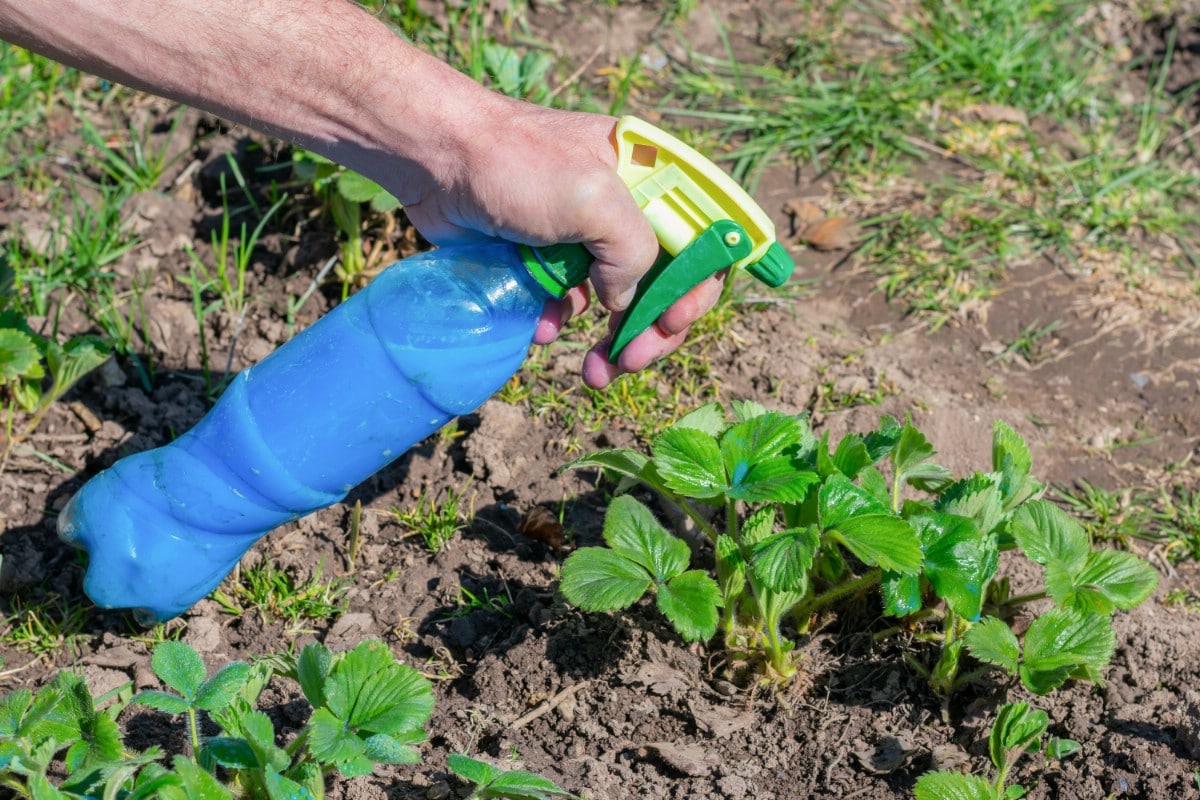
Diseases can stress your plant and prevent it from producing flowers. One such disease is root rot. Root rot is the result of “wet feet” because the plant has been overwatered or the soil doesn’t drain properly. Repot the strawberry plant or transplant it to another part of the garden. You may not get fruit from the plant this year but your strawberries will be abundant and healthy next growing season.
Fungi cause a myriad of diseases that will prevent flowering. Two common culprits that attack flowers specifically are Botrytis (gray mold) and powdery mildew. Gray mold is easy to spot and easy to treat with beneficial bacteria or a fungicide.
Powdery mildew may look like silvery dew on mature leaves at first, but it can quickly take over and destroy your strawberry crop. If you catch it early, simply watering your plants from above can wash the powdery mildew off and save your strawberries. Alternatively, apply potassium bicarbonate, a sulfur fungicide, or even milk to kill the spores.
To prevent the attack of fungi, space plants out or provide supports to increase airflow. Check often for signs of fungi. Don’t overwater your strawberries and make sure your soil drains efficiently.
Protect and feed your strawberry plants to encourage flowers and enjoy the best-tasting strawberries possible!

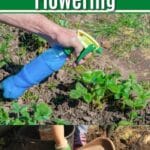
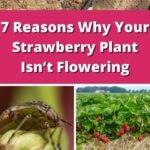
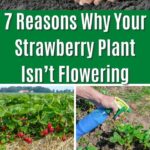
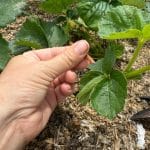

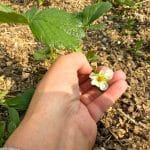
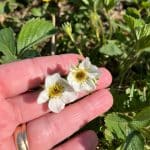
jeff says
My Quinault variety has been healthy 2 years in a row and has produced some fruit. It won’t put out any runners, however — why not! I want to create more plants.
Mary Ward says
Some sources report that if you’ve had large fruit harvests they may put more energy into the fruit and less into runner production. I’m not sure it sounds like you have had excessive fruiting, though. Perhaps your soil is lacking in nutrients. Have you been fertilizing? When?
VIDA ROŠER says
Hvala rada prebiram vaše napotke pri vzgoji sladkih jagod, se še priporočam
Ivy Chan says
I put fertilizer to my strawberry plant every week until now. There are flowers now. Should I continue or stop fertilising it? Thanks.
Mary Ward says
Stop fertilizing until after berries are done. Fertilizing too close to bloom and berry set can make berries mushy.
Keri Ellis says
I have Big Beautiful leaves and runners . Just no flowers or fruit ?
Mary Ward says
When were they planted?
Reza Mokhtari says
Hello
My strawberries have huge leaves and runners but Their flowers are very low And they only have strong grated leaves and runners
Their breed is good but they don’t have flowers
It is also suitable for fertilizer and soil
What is the problem?
Mary Ward says
Fertilization should be done after you have fruit. If you fertilize too close to when the blossoms turn to berries, the fruit can be mushy. Probably best to wait until the flowers do what they can do, and then fertilize or add good compost as an amendment. You could take a soil sample and see if the soil needs to be adjusted for pH or other minerals.
Lavette Hodge says
I have huge leaves but no flowers or runners. I used a perlite,
peat moss, black cow as my soil mix. Did I use the wrong mixture?
Mary Ward says
That should be a good mix and if it were the mix that was the problem, you would see problems with the plant–dried up leaves, listlessness, etc. If they are new plants perhaps they aren’t old enough or in the right cycle of the season to produce flowers. For instance, June-bearing plants would have set flowers last fall, so you might have to wait until next year. If new everbearing, they might just need to get a bit older.
Efya says
I jus woke up to see strawberry bud on one of the strawberry plant but no flower seen. Please,what might be the cause?
Mary Ward says
If you mean there is a baby fruit, most likely you just didn’t notice the flower before it dropped its petals.